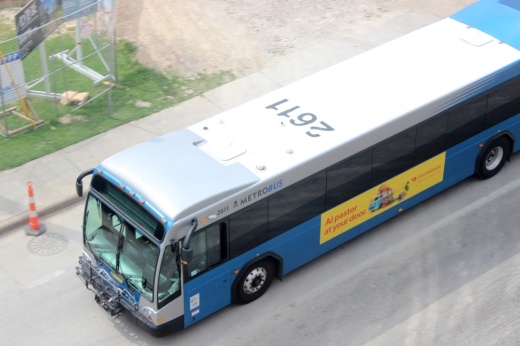While much of Capital Metro’s operations fall within Austin’s city limits, the local transit authority also offers service through a series of partnerships throughout the city’s suburbs.
“It really is about regional collaboration, and we're always trying to figure out how to get better collaboration,” said Dottie Watkins, chief operating officer at Capital Metro.
She added population growth in Central Texas means the transit agency will likely have to continue to identify creative ways to partner with cities that fall outside of its taxing jurisdiction.
Round Rock offers a unique example of a city that falls outside of the tax jurisdiction but continues to use Capital Metro services. Round Rock obtains federal funding directly but contracts with Capital Metro, ensuring its riders have a seamless experience when traveling between Round Rock and Austin.
Round Rock Director of Transportation Gary Hudder said the setup allows the city greater flexibility.
“If we didn't have control of the dollars ourselves, if we were in essence just an expansion of the Capital Metro system that we were participating in financially, we would be much more tied to their decisions, choices, so forth about what kind of service was going to be provided and what it looks like and how it might change over time,” Hudder said.
Meanwhile, cities such as Leander are considering alternatives to Capital Metro’s services so they can reclaim the 1% sales tax they give to the public transit agency.
Leander officials are mulling a November election toward that goal, and it would be the city’s first time considering such a move since voting to continue using Capital Metro’s services in 2000.
Beyond the suburbs
Nonurbanized areas in central Texas have the Capital Area Rural Transportation System as their primary public transit system, but data shows the number of local nonurbanized territories is constantly shrinking as Austin continues to grow. For example, after the 2010 census, Georgetown’s status changed to urban.
CARTS operates in parts of nine counties and often teams up with Capital Metro—a partnership that dates back to 1986—to help more rural riders get to and from Austin.
As one example, the 990 route runs from downtown Austin to Elgin. While it is a CARTS-operated route, if a rider puts money in the fare box from Austin to Manor, it goes to Capital Metro, but from Manor to Elgin it goes to CARTS.
The Eastside Bus Plaza, which began operations June 28, offers another illustration of a partnership between Central Texas transportation agencies, as it will serve four CARTS routes and nine Capital Metro routes.
“That's kind of the first formal step we've made to make an interception point where both our services connect and where people can transfer between the two,” CARTS General Manager David Marsh said.
Prioritizing transit
Pflugerville does not fall within CARTS purview and, until recently, did not pay for service with Capital Metro. However, in March it rolled out a one-year pilot program of an on-demand Pickup service.
A study from 2021 indicated that Pflugerville residents are increasingly looking for more transit options.
When asked how the city should prioritize project improvements over the next two years, respondents ranked “Transit system development (bus/rail/park-and-ride, etc.)” in their top three choices at the third highest rate just behind “Enhancements to downtown Pflugerville.”
For now, the city awaits the results of its one-year trial with the Pickup service, which runs on weekdays. In May, it provided 223 rides in the Pflugerville zone according to data provided to the city of Pflugerville by Capital Metro.
In addition to expanding the Pickup service, Capital Metro is beginning to reopen routes that were closed or scaled back during the pandemic.
That includes route 980, a key Round Rock-to-Austin connection that will begin running in August.
As for ridership, Watkins said he is confident Capital Metro will see numbers bounce back in step with increased traffic.
“I'm not going to have to worry about sitting in the traffic. Instead, I'm going to sit on the vehicle with some Wi-Fi and catch up on my reality TV show on the way home,” Watkins said. “That’s a way better use of my time than sitting in traffic.”





